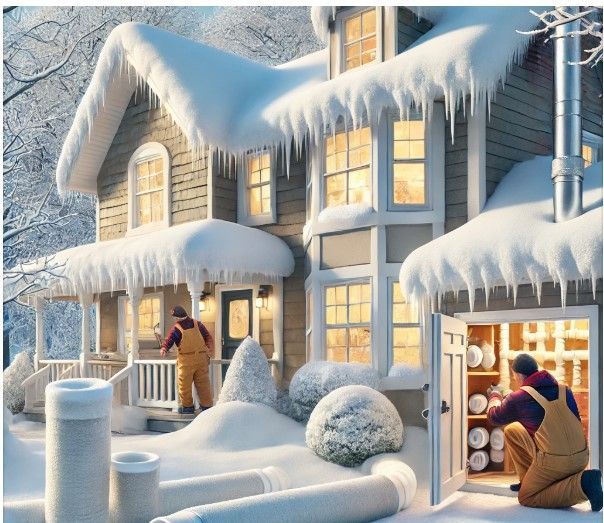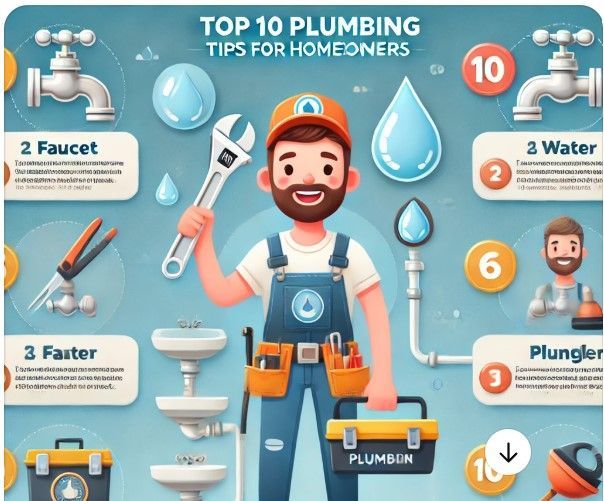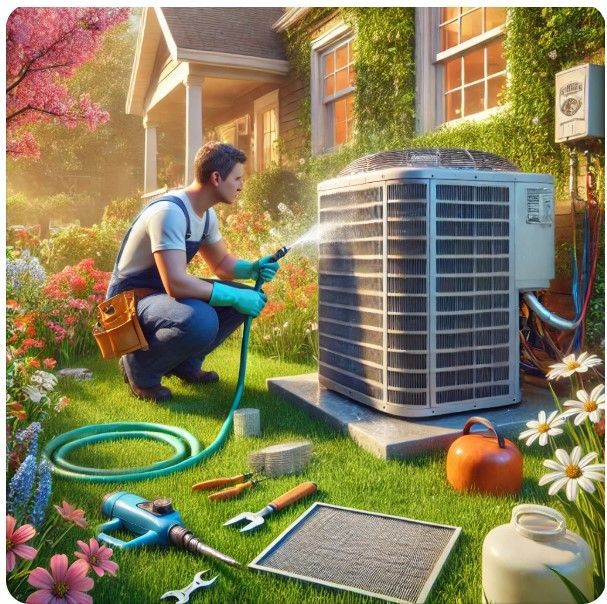Prepare Plumbing for Freezing Temps This Winter in Buffalo
Winter is Coming: How to Prepare Your Plumbing for Freezing Temperatures

Why Preparing Your Plumbing for Winter Matters
As the crisp autumn air gives way to the biting chill of winter, those of us in Buffalo, NY, know all too well what’s coming. The snowstorms, the icy roads, and yes—the freezing temperatures that can wreak havoc on our homes, especially our plumbing systems. While winter brings its own unique beauty, it also poses significant challenges, particularly when it comes to preventing frozen pipes and the costly damage they can cause.
But here's the good news: with a little foresight and some practical steps, you can safeguard your home's plumbing against the harsh winter weather. Not only will this protect your property, but it can also save you a considerable amount of money—a welcome relief in today's economy.
In this comprehensive guide, we'll walk you through everything you need to know to prepare your plumbing for freezing temperatures. We'll cover why it's essential, the steps you can take, and how to do it without breaking the bank.
The Risks of Frozen Pipes
When temperatures dip below freezing, the water inside your pipes can freeze. Since water expands when it freezes, this can lead to increased pressure inside the pipes, causing them to crack or burst. A burst pipe isn't just a minor inconvenience; it can lead to significant water damage, mold growth, and expensive repair bills.
The Financial Impact
According to industry estimates, a single burst pipe can cause upwards of $5,000 in damage. In an economy where every dollar counts, spending a little now on prevention can save you thousands later.
Steps to Prepare Your Plumbing for Freezing Temperatures
1. Insulate Your Pipes
Why It's Important: Insulating your pipes is one of the most effective ways to prevent them from freezing. This is especially crucial for pipes located in unheated areas like basements, crawl spaces, attics, and garages.
How to Do It:
- Identify Vulnerable Pipes: Look for pipes along exterior walls and in unheated spaces.
- Choose the Right Insulation: Foam pipe insulation is affordable and easy to install. For added protection, consider using heat tape or heat cables before applying insulation.
- Installation Tips: Measure the length of the pipes and cut the insulation accordingly. Secure it with duct tape or cable ties to ensure it stays in place.
Cost Consideration: Pipe insulation materials are relatively inexpensive, and the investment pays off by preventing costly repairs.
2. Seal Cracks and Openings
Why It's Important: Cold air can enter your home through cracks and openings, especially near where pipes are located. Sealing these gaps helps keep warm air inside and cold air out.
How to Do It:
- Inspect Your Home: Check around windows, doors, and where pipes enter or exit your home.
- Use Caulk or Weatherstripping: Seal any gaps or cracks you find. Expanding foam can be used for larger openings.
- Don't Forget the Basement and Attic: These areas are often overlooked but can be significant sources of drafts.
Cost Consideration: The materials needed are inexpensive, and sealing your home can also reduce heating costs—a double win!
3. Keep Your Home Warm
Why It's Important: Maintaining a consistent indoor temperature helps prevent pipes from freezing. Even if you're trying to save on heating bills, letting the temperature drop too low can be risky.
How to Do It:
- Set Your Thermostat: Keep it set to at least 55°F even when you're not home.
- Consider a Programmable Thermostat: This allows you to manage temperatures efficiently and can lead to energy savings.
- Heat All Rooms: Don't close off unused rooms completely; the plumbing in those areas still needs warmth.
Cost Consideration: While heating costs might increase slightly, it's a small price to pay compared to the potential damage from frozen pipes.
4. Let Faucets Drip
Why It's Important: Allowing a small amount of water to run through your pipes keeps water moving, which makes it less likely to freeze.
How to Do It:
- Identify At-Risk Faucets: Focus on faucets connected to pipes along exterior walls.
- Set to a Trickle: The flow doesn't need to be substantial—a steady drip will suffice.
- Both Hot and Cold Lines: Open both the hot and cold taps slightly to keep both lines moving.
Cost Consideration: The extra cost on your water bill will be minimal compared to the cost of repairing a burst pipe.
5. Open Cabinet Doors
Why It's Important: Pipes under sinks are often against exterior walls. Opening cabinet doors allows warm air from your home to circulate around these pipes.
How to Do It:
- Kitchen and Bathrooms: Open the doors of cabinets that house sinks, especially those on exterior walls.
- Safety First: If you have young children or pets, remove any harmful chemicals or cleaners first.
Cost Consideration: This tip doesn't cost anything and can be highly effective.
6. Disconnect and Drain Outdoor Hoses
Why It's Important: Water left in hoses can freeze and cause connected pipes to burst.
How to Do It:
- Disconnect All Hoses: Remove hoses from outdoor faucets.
- Drain and Store Hoses: Empty any remaining water and store them indoors.
- Shut Off Outdoor Valves: If your home has a separate shut-off valve for outdoor faucets, turn it off and drain the water from the faucet.
Cost Consideration: This step is free and can prevent expensive repairs.
7. Install Frost-Proof Outdoor Faucets or Faucet Covers
Why It's Important: These devices provide an extra layer of protection for outdoor faucets, which are particularly susceptible to freezing.
How to Do It:
- Faucet Covers: Available at most hardware stores, they're easy to install—simply attach them over the faucet.
- Frost-Proof Faucets: Consider upgrading to frost-proof models, which are designed to prevent freezing.
Cost Consideration: Faucet covers are inexpensive, and while frost-proof faucets are a bit more, they offer long-term protection.
8. Know Where Your Main Shut-Off Valve Is
Why It's Important: In case a pipe does burst, knowing how to quickly shut off your home's water supply can minimize damage.
How to Do It:
- Locate the Valve: It's usually in the basement, crawl space, or near the water heater.
- Ensure Accessibility: Make sure the valve is not obstructed and can be turned off easily.
- Educate Household Members: Ensure everyone knows where it is and how to operate it.
Cost Consideration: This tip is free and could save you thousands in potential water damage.
9. Consider Installing Heat Tape or Heat Cables
Why It's Important: These devices can keep your pipes warm in extremely cold temperatures.
How to Do It:
- Select the Right Product: Choose UL-listed products suitable for the type of pipes you have.
- Follow Manufacturer Instructions: Improper installation can be hazardous.
- Professional Installation: If you're unsure, hire a professional to install them safely.
Cost Consideration: While there's an upfront cost, it's a worthwhile investment for homes in extremely cold areas.
10. Schedule a Professional Plumbing Inspection
Why It's Important: A professional can identify vulnerabilities you might miss and provide personalized recommendations.
How to Do It:
- Find a Reputable Plumber: Look for licensed professionals with good reviews.
- Ask for a Winterization Check: Specify that you want an inspection focused on preparing for freezing temperatures.
- Follow Through on Recommendations: While some fixes might cost money, they can prevent much larger expenses down the line.
Cost Consideration: An inspection might cost a couple of hundred dollars but can save you much more by preventing major issues.
The Economic Benefits of Preventative Maintenance
In challenging economic times, it's understandable to be cautious about spending. However, consider the following:
- Cost of Repairs vs. Prevention: Repairing water damage from a burst pipe can cost thousands, while preventative measures are relatively inexpensive.
- Energy Efficiency: Some of these steps, like sealing drafts and insulating pipes, can also reduce your heating bills.
- Home Value: Maintaining your home's plumbing system can preserve or even enhance your property's value.
Investing a little now can save you a lot later—a wise move for any homeowner.
Additional Tips and Considerations
Monitor Weather Forecasts
Stay informed about upcoming cold snaps so you can take extra precautions when necessary.
Maintain Your Heating System
A well-functioning heating system is your first line of defense against frozen pipes.
- Regular Maintenance: Have your furnace or boiler serviced annually.
- Change Filters: Replace furnace filters regularly to ensure efficient operation.
Be Mindful of Extended Absences
If you're planning to be away:
- Don't Turn Off the Heat: Keep your thermostat set to at least 55°F.
- Ask Someone to Check In: Have a neighbor or friend check your home periodically.
- Shut Off Main Water Supply: For extended trips, consider turning off the water and draining the system.
Educate Your Family
Ensure everyone in your household knows what steps to take in case of an emergency, like locating the main shut-off valve.
Conclusion: Take Action Now to Protect Your Home
Winter doesn't have to be a season of plumbing woes. By taking these proactive steps, you can prevent frozen pipes, avoid costly repairs, and enjoy the peace of mind that comes with knowing your home is protected.
We understand that in today's economy, every expense matters. That's why most of these tips are low-cost or even free. Investing a little time and money now can save you significant stress and financial strain later on.
If you need assistance or have concerns about your plumbing system, don't hesitate to reach out to a professional. Sometimes, an expert eye can spot issues that aren't immediately obvious.
Ready to Winterize Your Plumbing?
As plumbing, heating, and air conditioning experts serving the Buffalo, NY area, we're here to help you navigate the challenges of the upcoming winter season. Whether you need an inspection, repairs, or just some friendly advice, we're committed to providing compassionate, affordable services.
Contact us today to schedule a consultation or to learn more about how we can help you prepare your plumbing for freezing temperatures.
Frequently Asked Questions (FAQs)
Q: Can I use space heaters to warm areas with vulnerable pipes?
A: Yes, but exercise caution. Keep space heaters away from flammable materials and never leave them unattended.
Q: Is leaving a faucet dripping wasteful?
A: The water used is minimal compared to the potential cost of repairing a burst pipe.
Q: How do I know if my pipes are frozen?
A: Signs include no water coming from the faucet, strange smells, or visible frost on the pipes.
Don’t let Buffalo’s freezing temperatures catch you off guard this winter. By following these proactive tips, you can safeguard your plumbing system, prevent costly damage, and enjoy peace of mind all season long. Whether it’s insulating pipes, sealing drafts, or simply knowing where your main shut-off valve is, a little preparation goes a long way in protecting your home and wallet.
If you have questions about winterizing your plumbing or encounter any issues, trust the experts at MyBuffaloPlumber.com to help. From inspections to repairs, we’re here to ensure your home stays safe, warm, and worry-free.
Call or visit MyBuffaloPlumber.com today, and let us take care of your plumbing needs this winter!
Designed by KDesign
Copyright 2023 MyBuffaloPlummer.com. All Rights reserved.




